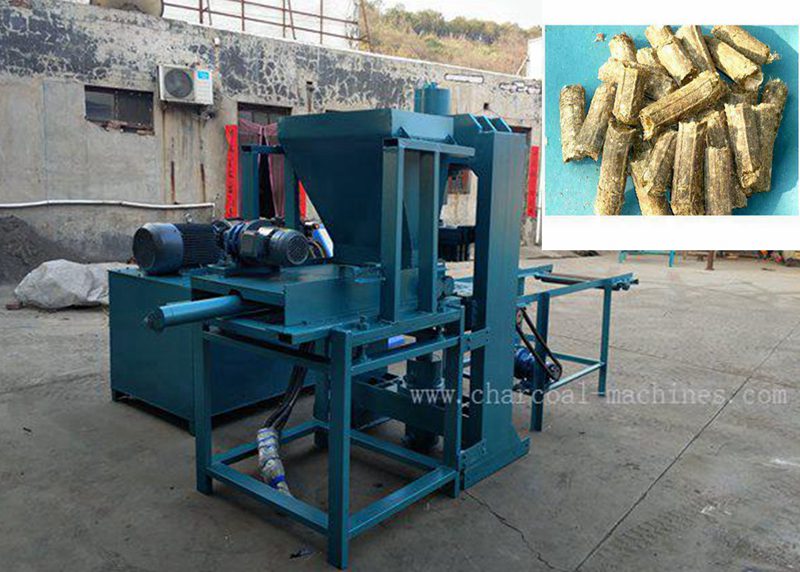principe de fonctionnement
La machine de briquetage de charbon de paille est principalement composée d'un convoyeur d'alimentation, d'un compresseur et d'une machine d'évacuation. Le compresseur se compose d'un châssis, d'un moteur électrique, d'une bouche d'alimentation, d'un système de transmission, d'un rouleau structurel d'une presse à briqueter la paille, d'une matrice annulaire, d'un anneau chauffant électrique et d'une bouche d'évacuation.
Le principe de fonctionnement de la machine de briquetage de charbon de paille est le suivant : la paille ou l'herbe fourragère à presser est coupée ou torsadée, sa longueur est inférieure à 50 mm, la teneur en eau est contrôlée dans la plage de 10 à 25 %, et la matière est introduite dans l'alimentation par le convoyeur d'alimentation. La bouche tourne à travers l'arbre principal pour entraîner le rouleau de pression en rotation, et après la rotation du rouleau de pression, la matière est extrudée de force du trou du modèle et tombe de la bouche d'évacuation. Après refroidissement, la teneur en humidité ne peut pas dépasser 14 %, et le sac est emballé. emballage.

Caractéristiques structurelles
La forme du moule de compression de la machine de briquetage de charbon de paille est une matrice annulaire plate, et ses caractéristiques structurelles : Premièrement, le moteur entraîne le réducteur pour entraîner la broche en rotation, puis entraîne le rouleau de pression par l'arbre principal en rotation, la structure est simple et la maintenance est pratique ; deuxièmement, le rouleau de pression et le moule L'ajustement de l'écart radial est pratique, ce qui peut assurer l'écart le plus approprié entre les deux rouleaux de pression et le moule ; troisièmement, l'ajout d'anneaux chauffants électriques supérieurs et inférieurs, qui peuvent chauffer la matrice annulaire, ce qui est bénéfique pour la formation du matériau.
Processus de production
Le matériau dépassant 60 mm est découpé par une machine à râteau ou pulvérisé par un pulvérisateur, et la longueur des grains de matériau et la teneur en eau sont dans la plage spécifiée ; le matériau est envoyé uniformément à la machine de moulage par la machine d'alimentation (convoyeur à bande) ou manuellement. Dans l'ouverture, le pressage forme le produit fini. De la source de matière première à l'utilisation du combustible, le processus est : récupération de matériau → découpe → élimination automatique des métaux → pressage → formation → sortie → refroidissement → transport → centrale électrique à biomasse ou petite chaudière ou civil.
